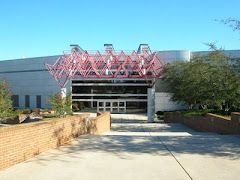Around 2007, an entry in Wikipedia stated that Sinbad, an
actor-comedian, died of a heart attack. Several people saw it and started
calling and emailing one another. Word got to Sinbad’s daughter and she called
him. He assured her that he was, in fact, not dead. In one of the interviews he
said; “I wish that people would’ve called me back like this when I was alive. I
gotta die more often.”
The
lesson here is that anyone can post anything on Wikipedia, as well as on the
Internet in general. There are no review standards with regard to content.
There are no quality control mechanisms that verify the validity of the
information. Not only that, the information is not stable. Websites come and go
at the whim of their creators. Contents can be sneakily altered without prior
notice. Locations and contents can change at any time. Worst yet, it can be a
hoax.
In
2009, only hours after Maurice Jarre, a famous French composer, passed away,
Shane Fitzgerald, a Dublin University student, posted a poetic but phony quote
on Wikipedia. He said afterward that it was just “to test how our globalized,
increasingly Internet-dependent media was upholding accuracy and accountability
in an age of instant news.” Months went by and nobody noticed the editorial
fraud. So Fitzgerald started emailing several media outlets concerning what he
had done. But that was several days after the quote had been cut and pasted into
different newspapers. Fitzgerald said; “I am 100 percent convinced that if I
hadn’t come forward, that quote would have gone down in history as something
Maurice Jarre said, instead of something I made up.”
I use
Wikipedia as an example to show how unreliable the Internet in general can
be. In the Internet world anything that
can go wrong eventually will go wrong, even a site that ‘appears’ reliable like
Wikipedia.
Back to
Wikipedia. It has improved tremendously since the days of Sinbad and Shane Fitzgerald.
It tightened its content posting guidelines and notes at the top of each entry
when information needs verification or references. There is an army of
volunteers monitor content and entries at all times. Nevertheless, problems
still exist with a site that is open to all like that. Lance Ulanoff, Editor in
Chief of PC Magazine, wrote about Wikipedia in 2011. Shortly after that an
entry about him appeared in Wikipedia. He said he felt honored even though
there was hardly any information there. So he went in and edited it by adding
his background and projects he was working on. Then, somebody changed it by adding
new details about his life. This
individual said that he served in the French Foreign Legion, was a chef, and dated
super models. He said all of those statements were “100 percent false.”
So
trust your professor and your librarian when he/she tells you to use academic
databases rather than Google or Wikipedia for your information searching.
By Kultida Dunagin
By Kultida Dunagin



